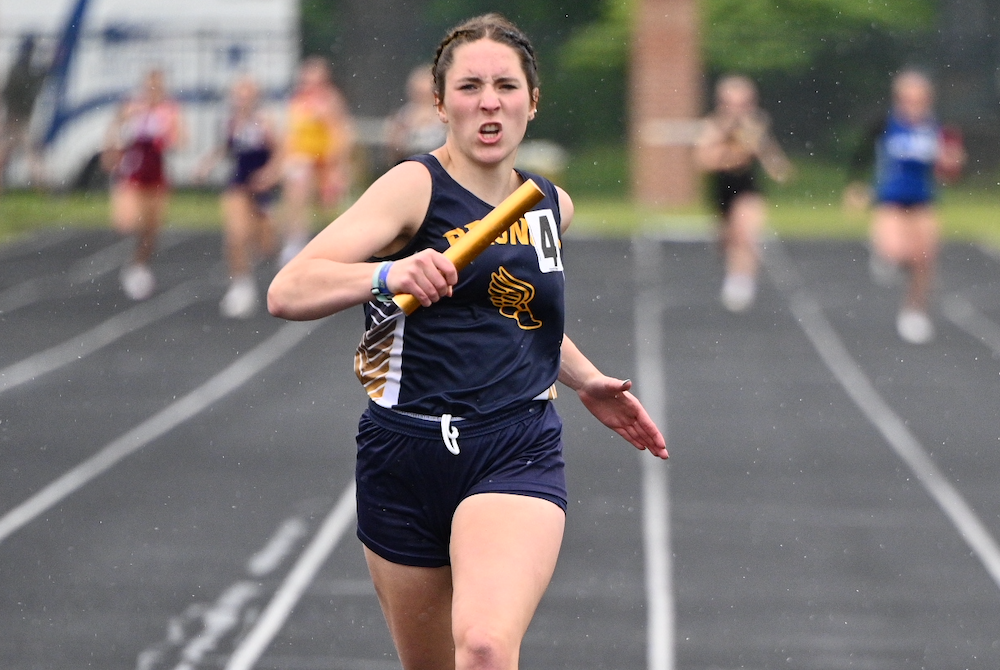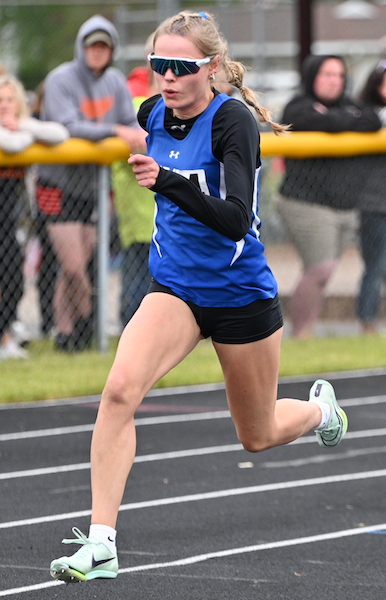
Casting Lines for Future Tournaments
August 12, 2016
By Jack Roberts
MHSAA Executive Director
The MHSAA is best known to the public for the tournaments it conducts to conclude the fall, winter and spring seasons each school year.
These tournaments, the first and largest program of the MHSAA, have survived the Vietnam War, the Korean conflict and two World Wars. They have survived the technology bubble, the housing collapse, the energy crisis and the Great Depression.
MHSAA tournaments existed at the dawn of aviation and at the time of our nation’s lunar landing. Popes, presidents and governors have changed and changed again and again, and MHSAA tournaments roll on year after year.
But the sense of tradition and permanence and inevitability of MHSAA tournaments doesn’t dissuade us from asking questions about our tournaments, even some of the most basic questions. Here are two.
Question #1
I have long been and will always be an advocate for a Ryder Cup format for the MHSAA Golf Finals, and a team tennis approach to the MHSAA Tennis Finals; but 90 years of tradition is hard to overcome. Might this be a more exciting format? Could it be co-ed? Could it reverse the decline in boys tennis participation, and increase girls golf participation? Wouldn’t it be fun to try?
Periodically, the International Olympic Committee requires each of the designated Olympic sports to defend its status, to state its case why the sport should remain a part of the Olympic program. Then, after a series or votes that retain one sport at a time, the IOC drops the sport that makes the weakest case. It does so to make room for one of the previously unlisted sports that makes the best case for inclusion.
This would appear to keep the existing Olympic sports on their toes, and to keep the Olympic movement fresh and reflective of modern trends in sports.
While I would not enjoy the controversy, I can see the potential for some positive results if the MHSAA were to invoke the same policy for determining the 14 tournaments it will provide for girls and the 14 for boys.
This might cause us to consider more deeply what a high school sport should look like, or at least what an MHSAA tournament sport should stand for.
On the one hand, we might be inclined to drop tournaments for those sports that involve mostly non-faculty coaches and non-school venues, or require cooperative programs to generate enough participants to support a team, or resort almost entirely to non-school funding, or cater to individuals more than teams.
Or perhaps this process would cause policymakers to forget traditional thinking and ask: “In this day and age, should we shake off traditional notions of sport and consider more where modern kids are coming from?” That might mean fewer team sports and more individual sports, more “extreme” sports like snowboarding and skateboarding, and more lifetime sports, meaning not just golf and tennis and running sports, but also fishing and even shooting sports.
Currently, MHSAA policy states that the MHSAA will consider sponsorship of a tournament series for any sport which 64 member schools conduct on an interscholastic basis as a result of action by the governing boards of those schools.
Should the only question be how many schools sponsor a sport, or must an activity also have certain qualities and/or avoid certain “defects?” What should an MHSAA tournament sport look like and stand for?
Question #2
Bristling from criticism that his association is a money-grabbing exploiter of children, my counterpart in another state said, “If we were running our programs just to make money, we would do very many things very differently.” I knew exactly what he meant.
Because we care about the health and welfare of students, because we mean what we say that the athletic program needs to maximize the ways it enhances the school experience while minimizing academic conflicts, and because we try to model our claim that no sport is a minor sport when it comes to its potential to teach young people life lessons, we operate our programs in ways that make promoters, marketers and business entrepreneurs laugh, cry or cringe.
If money were the only object, we would seed and select sites to assure the teams that attracted the most spectators had the best chance to advance in our tournaments, regardless of the travel for any team or its fan base. If money were the only object, we would never schedule two tournaments to overlap and compete for public attention, much less tolerate three or four overlapping events. If money were the only object, we would allow signage like NASCAR events and promotions like minor league baseball games.
Those approaches to event sponsorship may not be all wrong; they’re just not all right for us. And we will live with the consequences of our belief system.
During a typical school year, more than 20 percent of the MHSAA’s 2,097 District, Regional and Final tournaments lose money. Not a single site in golf, skiing or tennis makes a single penny. In no sport did every District, Regional and Final site have revenue in excess of direct expenses.
In fact, in only three sports – boys and girls basketball and football – is revenue so much greater than direct expenses overall that it helps to pay for all the other tournaments in which the MHSAA invests.
That’s right: invests. When we present our budget to our board, we talk about the MHSAA’s investment in providing tournament opportunities in all those sports and all those places that cannot sustain the cost of those events on their own. How much is this investment worth to students, schools and society?
These two are core questions that require our focus far in advance of talk about scheduling, site selection, seeding and the myriad matters that too often hijack our time and attention.

Bark River-Harris Lands 3-Peat, Shamion Joins Elite 4-Event Winners Club
By
John Vrancic
Special for MHSAA.com
June 2, 2024
KINGSFORD — The Bark River-Harris girls completed their season-long mission here Saturday, earning their third straight Upper Peninsula Division 2 track & field championship with 127½ points.
West Iron County brought home the runner-up trophy with 82, and third-place Ishpeming had 71.
“The girls have been working hard for this,” BR-H coach Jason Lockwood said. “Three U.P. titles under their belt is incredible. Everybody contributed, which is instrumental in putting up that many points.”
BR-H senior and Bay College basketball recruit Lauren Zawada captured the 100-meter hurdles in 17.74 seconds and 300s (50.92) and helped the Broncos win the 1,600 relay at 4 minutes, 24.4 seconds.
“My starts are what helped me this time,” she said. “That was my first individual U.P. title, which gives me a pretty good feeling. I’m pretty excited.”
Fellow senior and Bay College basketball recruit Mckenzie Hoffmeyer won long jump at 16 feet, ½ inch, helped the Broncos win the 800 relay (1:49.92) and placed second in the 100 (13.03) and 200 in a personal-best 26.52.
“Even though I didn’t win the 100 or 200, I still got points for the team,” she said. “It feels pretty awesome for us to come together and win this three times in a row.”
Hoffmeyer was runner-up to West Iron County senior Danica Shamion, who took high jump with a record 5-1, the 100 at 12.65 and also set U.P. records in the 200 (26.17) and 400 (56.94). She’s one of just nine girls to win four individual events at a Track & Field Finals.
 Shamion’s U.P. records took place four days after she set school records in the 200 (25.79) and 400 (56.74) and high jump (5-5) at Houghton.
Shamion’s U.P. records took place four days after she set school records in the 200 (25.79) and 400 (56.74) and high jump (5-5) at Houghton.
“I went out with a bang, which is something I wanted to do as a freshman,” she said. “I kept thinking, ‘Take it one step at a time.’ The high jump runway was a little slippery (during brief rainfall). It was hard to get your grip.”
BR-H junior Marissa Ives, also part of the 800 relay, took third in the 200 (27.42) and fourth in the 100 (13.5).
“I think we did pretty good for having a young team (in the 800 relay),” she said. “The rain felt good during the race. It makes it a little harder coming out of the blocks, but it cools you off.”
Senior Julia Olson, who helped the Broncos win the 1,600 relay, set school records while taking fourth in the 400 (1:00.54) and 800 (2:29.2).
“This is honestly rewarding,” Olson said. “Part of this is due to our training in the weight room during the offseason. It really paid off. It’s also good to know I had good competition on top of it.”
Pickford sophomore Talya Schreiber won the 1,600 (5:19.16) and 3,200 (11:49.86) and was runner-up in the 800 (2:27.88).
“Lola (Korpi) is a great runner,” she said. “It definitely helps to have her here to push me. This feels really good. I’m happy to be here for our team. The atmosphere is awesome. Everyone is so nice.”
Ishpeming senior and Northern Michigan University recruit Korpi won the 800 (2:26.36) and placed second in the 1,600 (in a school-record 5:20.19) and 3,200 (12:12.63).
“I let her creep away from me a little too much and I couldn’t quite catch her in the 1,600,” said Korpi, who capped her career with 10 individual Track Finals titles. “She started her kick, too.
“I’m obviously happy with another school record. I feel I left my mark. I’m also happy for Talya. She worked so hard and helped me get my PR. Second place isn’t bad. I’m happy where I am.”
Sophomore Mya Hemmer added a first for Ishpeming in discus (114-6) and second in shot put (33-5¼), and Ironwood sophomore Emma Wardon took first in shot (34-5).
PHOTOS (Top) Bark River-Harris's Carli Erickson crosses the finish line far ahead of her competition in the 800 Relay. Other members of the winning team were Mckenzie Hoffmeyer, Julia Nault, and Marissa Ives. (Middle) West Iron County's Danica Shamion starts the 400, which she eventually wins. (Click for more from Cara Kamps/RunMichigan.com.)

